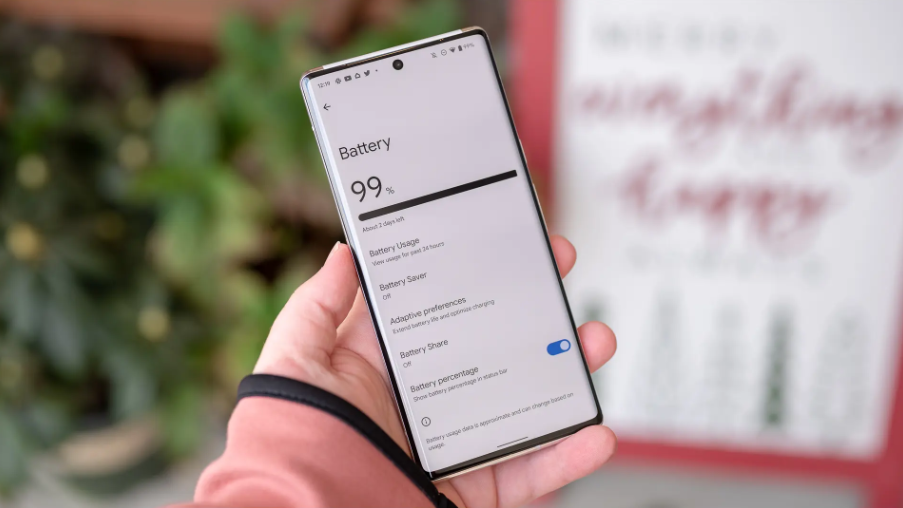How dangerous is leaving your phone in the sun?
- Tram Ho
Your phone is designed to release heat, not to absorb it
Smartphones are made from all sorts of materials, but metal and glass are the two most common. This is especially true for high-end phones, which often opt for glass and metal over plastic. This can be a problem in sunlight.
Metal body phones are designed to act as a heatsink, absorbing internal heat and helping to dissipate heat away from the phone, just like the radiators inside your computer move heat away from the CPU and GPUs. When the only heat is from the phone itself, everything usually works as it should.
However, heat from external sources such as the sun changes the dynamics. The excess heat overwhelms the effective self-cooling of the phone, and the heat dissipation design is effectively reversed. So, if your phone is placed in the sun, it will heat up very quickly and that may lead to display errors.
No matter what type of phone you have – whether it’s a sturdy plastic budget phone or a sleek high-end metal phone – you must avoid the extreme heat that the sun transmits to the body of the phone.
Excessive heat degrades the phone’s battery

Just like computers and other electronic devices, smartphones work best in relatively cool environments. The ideal internal temperature for your phone is between 32°F and 95°F (0°C to 35°C). Both Apple and Samsung list this temperature range as “normal operating conditions” for iPhone, iPad, and Samsung Galaxy devices. Apple also recommends storing devices at temperatures between -20º and 45º C (-4º to 113º F).
The reason for these temperature ranges is battery degradation. The hotter the battery, the harder it is to convert chemical energy into electricity. As a result, that leads to less battery life – you can test this on iPhone and Android – and shorter battery life.
Most smartphones will warn you if the temperature is out of the safe operating range. You’ll probably notice it yourself if you touch the device. Anything above 99°F will feel warm to the touch. For example, if your iPhone overheats, you’ll see a large on-screen message that says, “iPhone needs to cool down before you can use it.”
Overheated battery is very dangerous
Touchscreen not working is a pretty big deal and no one wants to cut down on battery life, but there are worse things that can happen when you leave your phone in the sun. The component in every smartphone that poses the greatest danger is the battery.
Battery degradation is just one of the things that can happen with an overheating battery. Worse is battery swelling and battery failure. When your phone can’t dissipate heat fast enough and the battery starts to get seriously damaged. Batteries move ions through an electrolyte, and when the substance breaks down during use, it produces gas that can build up and cause the battery to swell. Batteries in use are always in a state of deterioration, but normally this process drains battery life slowly and poses no danger to anyone.

High heat from the sun speeds up the process, which can lead to gas accumulating faster. The battery is significantly swollen, much easier to burn. Battery integrity is not something to be taken lightly.
Don’t cool it too fast
If your iPhone or Android device is overheating, you may want to quickly cool it down in the fridge, freezer, or even put it in the fridge while at the beach. That might seem like a quick way to deal with overheating, but you should avoid trying to “cool” your phone quickly.
A large temperature change from being out in the sun to rapidly cooling down can cause water vapor to condense inside the device.
Just as batteries don’t like hot temperatures, they also don’t like cold temperatures. As mentioned above, the ideal temperature for electronics is 32°F to 95°F (0°C to 35°C). While we are talking about the operating temperature of the phone, it is worth noting that extreme heat is what really needs attention. In extreme cold, your phone will behave erratically and the battery will temporarily report incorrect battery life. But when it warms back to room temperature, everything should be fine as long as moisture doesn’t condense inside the device.
When dealing with a phone that has overheated due to being left in the sun for too long, the best course of action is to simply power off the phone and move the phone into the shade or somewhere cooler such as indoors. your cold. Let the phone cool down slowly on a cool surface. Do not rush, or you will replace the overheating problem with another problem.
Source : Genk
